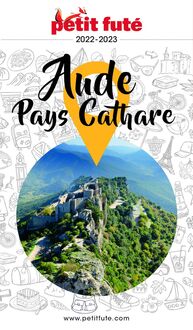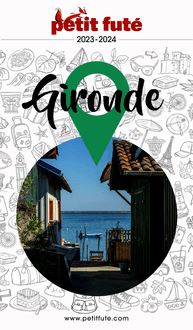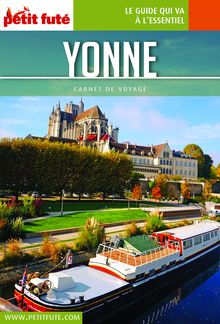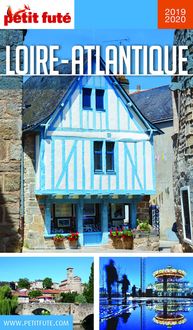-
 Univers
Univers
-
 Ebooks
Ebooks
-
 Livres audio
Livres audio
-
 Presse
Presse
-
 Podcasts
Podcasts
-
 BD
BD
-
 Documents
Documents
-
- Cours
- Révisions
- Ressources pédagogiques
- Sciences de l’éducation
- Manuels scolaires
- Langues
- Travaux de classe
- Annales de BEP
- Etudes supérieures
- Maternelle et primaire
- Fiches de lecture
- Orientation scolaire
- Méthodologie
- Corrigés de devoir
- Annales d’examens et concours
- Annales du bac
- Annales du brevet
- Rapports de stage
La lecture à portée de main
Vous pourrez modifier la taille du texte de cet ouvrage
Découvre YouScribe en t'inscrivant gratuitement
Je m'inscrisBEST OF CÔTE D'OPALE 2019/2020 Petit Futé , livre ebook
Découvre YouScribe en t'inscrivant gratuitement
Je m'inscrisEn savoir plus
Vous pourrez modifier la taille du texte de cet ouvrage
En savoir plus

Description
Sujets
Informations
| Publié par | Petit Futé |
| Date de parution | 20 novembre 2018 |
| Nombre de lectures | 2 |
| EAN13 | 9791033196167 |
| Langue | Français |
| Poids de l'ouvrage | 5 Mo |
Informations légales : prix de location à la page 0,0250€. Cette information est donnée uniquement à titre indicatif conformément à la législation en vigueur.
Extrait
Table des matières
Welcome to Côte d'Opale!
Discover Côte d'Opale and Bay of Somme
Must-Sees
Nature
Economy
History
Heritage & Traditions
Gastronomy
Sports & Leisure
Festivals and events
Côte d'Opale (Opal Coast)
Côte d'opale (Opal Coast)
Baie de Somme
Baie de Somme (Bay of the Somme)
Organize Your Stay
Going to Côte d'Opal
Galerie photos
Galerie cartes
© Petit Futé
© Olivier LECLERCQ
Welcome to Côte d'Opale!
C’est la côte française la plus septentrionale de France, et son nom « Côte d’Opale » est déjà en soi une invitation à la contemplation. Ce n’est pourtant pas ce qui viendrait à l’esprit de tout un chacun en évoquant le Noooord (merci Dany Boon!) et le Pas-de-Calais! Et pourtant… Le trait de côte est une invitation à respirer à pleins poumons, il offre une diversité de paysages sauvages de la frontière belge à la côte picarde avec ses dunes millénaires, son arrière-pays oscillant entre vallons verdoyants du côté du Boulonnais et plat pays côté Flandre maritime. Territoire maritime, la Côte d’Opale est réputée pour ses étendues de sable fin et sa mer qui change de couleur en fonction des saisons et de la lumière du jour, laquelle n’a rien à envier à la monochromie d’une autre mer plus au sud! Les points centraux de cette côte, et les plus spectaculaires, sont les caps Gris-Nez et Blanc-Nez. Impossible de rester insensible aux points de vue qu’ils offrent et ce, quelles que soient les conditions météorologiques. Il y aura toujours de la beauté à capter en Côte d’Opale, et la chaleur, à défaut d’exciter le thermomètre, est réellement dans le cœur des gens et dans l’accueil. Ils seront très fiers de vous parler de leur région, de vous rappeler à quel point elle a pu souffrir dans sa chair lors de la Seconde Guerre mondiale et dont elle porte encore les stigmates. A quel point aussi elle a donné à la France et à quel point elle continue à peser dans l’économie: Dunkerque est le 3 e port marchand de France, Boulogne le 1 er port de pêche et le plus grand centre de transformation de produits de la mer. Quant à Calais, son port accueille chaque année 10 millions de passagers! Destination nature, carrefour culturel, territoire d’innovation (tunnel sous la Manche), la Côte d’Opale sait s’appuyer sur ses atouts. Nausicaa en est le parfait exemple. Avec l’ouverture de son nouveau bassin au printemps 2018, l’aquarium est devenu le plus grand d’Europe. Malo-les-Bains, la plus belle des plages du Nord, a retrouvé un second souffle. Le Touquet, l’historique « Paris-Plage », capte encore plus de curieux, villa présidentielle oblige! Les plages de Côte d’Opale sont désormais des destinations de vacances, et chaque station balnéaire est riche de ses particularités et est le point de départ pour des balades et activités vivifiantes dont certaines sont nées sur la Côte d’Opale, comme le longe-côte (à tester absolument!) ou le kitesurf pour les amateurs de sensations fortes. La côte est d’ailleurs un territoire de sensations. Celle que l'on ressent parfois quand on se dit qu'on n'a pas pris assez pris le temps de découvrir cette Côte d’Opale, dont le nom attribué au XX e siècle par le peintre Édouard Lévêque, n’a d’ailleurs jamais été contesté tant elle le mérite. Qu’à cela ne tienne, autour d’une bonne bière et d’un bon fromage local, on se promet que si c’était la première visite, ça ne sera certainement pas la dernière! De chez vous à la Côte d’Opale, il n’y a qu’un pas. Franchissez-le!
Discover Côte d'Opale and Bay of Somme
Wissant - The Wissant bay.
© Philippe Turpin
Must-Sees
Route 62
Along the route 62, several unmissable tourist sites await you, whether you are visiting for a weekend or intend to stay a while. On the whole, 16 partners, among which La Coupole, Centre Médiéval d'Azincourt, Rando-Rail, but also guesthouses, amusement parks, inns and hotels, historic centers and restaurants inviting you to discover the region at a reduced price: with the Benefits Card, you enjoy exclusive discounts. On route 62!
Information: www. route-62.fr
Identity card
Population: 686 000 inhabitants
Density: 221 habitants/km²
Surface: 4 100 km² – 145 km of coastline
Number of communes: 337
Part of the region: Hauts-de-France
Highest point: 133 m
Main water course: L'Aa, l'Authie, la Canche, la Liane, le Wimereux
Belfries, World Heritage sites
The two Dunkirk belfries. Dunkirk is the only city in France to have two belfries classified as UNESCO World Heritage. The Saint-Eloi belfry and the city hall belfry. The first, built in 1440 to serve as a steeple at the church dedicated to Saint Eloi, is a massive square tower of a height of 58 meters. It houses a carillon of 50 bells, whose great bell, called Jean-Bart, weighs 7 tons. The second, that of the city hall, was built by the architect Louis-Marie Cordonnier (1901) and culminates at 75 meters. A large stained glass window, representing the triumphant return of the corsary Jean Bart after his victory at the Battle of Texel (1694), illuminates the inner base of the tower.
{1}The Bergues belfry.{/1} The Bergues' belfry… a whole story on its own! Successively destroyed by a fire (May 30, 1940) and dynamited (September 16, 1944) by the Germans, it was reconstructed identically in 1961. Now, it houses the carillon or the tourist office, it stands on the grand-place and wisely waits for visitors to want to confront its 193 steps to better discover the panorama. Classified in 2004 as a world heritage of Unesco, it is one of the pride of the city. A carillon concert is given every Monday, market day.
The belfry of Gravelines. 27 meters high, the Gravelines belfry is located in the center of the citadel. Its particularity lies in the simplicity of its architecture with a lantern covered with slates as a unique decoration. Built in 1608, the belfry was renovated in the early 19th century and was beautifully decorated with wind vane in 1903.
The belfry of Aire-sur-la-Lys. The belfry of Aire-sur-la-Lys is built in the 13th century and symbolizes the freedom of the civil power. Originally it was made of wood but following the fires of 1372 and 1405, it will be restored in bricks and stones in 1447 before collapsing in 1708. The architect Heroguel will build a second between 1717 and 1724 behind the city hall. Solid, this one goes through the times to join us today. Culminating at 45 meters high, it has a turret on the north side as well as a four quadrants carillon. The brave will have to climb 236 steps before reaching its peak!
The belfry of the Hôtel de Ville de Calais. Classified as a world heritage site of UNESCO since 2005, the Belfry of the Calais town hall was renovated, a century after the first stone was laid. After repair or replacement of siding, roof and woodwork, stained glass windows and gilding of knights' statues, it is now open to the general public for the first time in its history. Enter, and take the elevator specially designed for visits and going up (by lift) to 75 meters high on the round path. A stunning view of the city, the harbor and the English coast await you.
The belfry of Boulogne-sur-Mer. It is one of the oldest belfries in the region, having never been destroyed. The base dates from the end of the12th century, the middle part of 13th and the upper, in octagonal form, brings us back to the 17th century. At the beginning of the 13th century, this former dungeon of the first Comtal castle was handed over to the city's bourgeois who made it their belfry, a symbol of communal freedoms. It was classified in 2005 as a World Heritage of UNESCO.
The belfry of Hesdin. Rebuilt between 1875 and 1879 thanks to a bequest of 12,000 francs from the son of the mayor at the time, the belfry of Hesdin was a square tower of three floors in which there were three superposed dungeons that now used as a municipal museum. The fourth floor is surmounted by a balustrade made for the path of guard. The same floor houses a two-ton bell above which the belfry summit completes the structure by a terrace and a dome that were once used to shelter the watcher.
Fortified cities
Throughout the time exposed to invasions, the Nord-Pas-de-Calais region inherited a military history still very present in the architecture of its cities. On the Opal Coast, several fortified cities offer bricks, stones, geometrical shapes and ramparts preserved over the centuries to passengers. The famous Vauban left an almost indelible footprint and continues to impress the history enthusiasts. All the cities once fortified did not keep their ramparts and several of them have dismantled their walls over the centuries. Nevertheless, some beads remain. Bergues, kept the entire fortified enclosure. The ramparts of Gravelines, built by the Count of Flanders Thierry d'Alsace and reinforced later by Vauban, are now admired on board a boat. Even further, the 3,400 meters of Montreuil-sur-Mer walls remained intact.
Upscale seaside resorts
Le Touquet-Paris-Plage. It is nicknamed the Pearl of Côte d'Opale, the North Arcachon or the Garden of the Channel. The reputation of the seaside resort Le Touquet-Paris-Plage is already well established and the golden years are for something. At that time, we lived the most beautiful years of the station. The most upper class (kings, presidents, maharajas and stars) had used to frequent its places, its casinos, its hotels, its hippodrome, golf and tennis, its beach, its forest… As a luxury and leisure destination par excellence, it is undeniably the flagship station of the Côte d'Opale. Memories of umbrellas, canoes and golden youth of the beautiful time are always floating in mind as immortal thing. The chic rue Saint-Jean and its first signs faithfully set up, its gourmet treats and beautiful boutiques confirm the Touquet's posh character. The year 2012 marked the centenary of the station, the opportunity to trace and celebrate its stunning ascension since its creation in 1912 thanks to
-
 Univers
Univers
-
 Ebooks
Ebooks
-
 Livres audio
Livres audio
-
 Presse
Presse
-
 Podcasts
Podcasts
-
 BD
BD
-
 Documents
Documents
-
Jeunesse
-
Littérature
-
Ressources professionnelles
-
Santé et bien-être
-
Savoirs
-
Education
-
Loisirs et hobbies
-
Art, musique et cinéma
-
Actualité et débat de société
-
Jeunesse
-
Littérature
-
Ressources professionnelles
-
Santé et bien-être
-
Savoirs
-
Education
-
Loisirs et hobbies
-
Art, musique et cinéma
-
Actualité et débat de société
-
Actualités
-
Lifestyle
-
Presse jeunesse
-
Presse professionnelle
-
Pratique
-
Presse sportive
-
Presse internationale
-
Culture & Médias
-
Action et Aventures
-
Science-fiction et Fantasy
-
Société
-
Jeunesse
-
Littérature
-
Ressources professionnelles
-
Santé et bien-être
-
Savoirs
-
Education
-
Loisirs et hobbies
-
Art, musique et cinéma
-
Actualité et débat de société
- Cours
- Révisions
- Ressources pédagogiques
- Sciences de l’éducation
- Manuels scolaires
- Langues
- Travaux de classe
- Annales de BEP
- Etudes supérieures
- Maternelle et primaire
- Fiches de lecture
- Orientation scolaire
- Méthodologie
- Corrigés de devoir
- Annales d’examens et concours
- Annales du bac
- Annales du brevet
- Rapports de stage




















